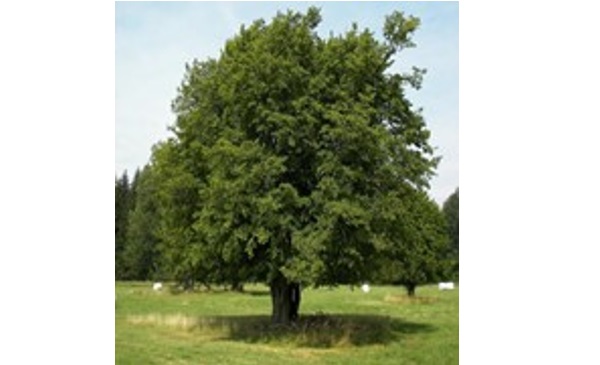 The Hornbeam tree;
Credit: Fondation Hellef fir d'Natur
The Hornbeam tree;
Credit: Fondation Hellef fir d'Natur
The natur & ëmwelt (nature and environment) organisation in Luxembourg has announced the Hornbeam, described as a valuable ally for biodiversity, as the tree of the year for 2025.
Carpinus betulus, more commonly known as Hornbeam or Common Hornbeam, is a tree native to Luxembourg belonging to the Betulaceae family. Although it is often confused with Beech due to the similarity of their leaves, it plays a fundamental role in the forest ecosystem and actively contributes to the preservation of biodiversity.
Description and characteristics
The Common Hornbeam is a medium-sized tree that can reach 20 m in height and lives for 50 - 150 years. Its grooved trunk, with sinuous reliefs reminiscent of muscles, is light in colour. The more pronounced the grooves, the older the tree.
Its oval, alternate and doubly toothed leaves are light green in spring, then turn golden yellow in autumn and brown/orange in winter. As its foliage is deciduous and marcescent, some of its leaves remain attached until the spring sap flush.
It flowers in April-May, in the form of discrete catkins, male and female on the same individual. In September its fruits, the samaras appear, grouped in clusters and used as food for many animals in autumn and winter.
Distribution and adaptation
The Hornbeam is the third most common tree species in Luxembourg, after the Beech and the Hazel. The Hornbeam is present in 17% of the Luxembourg forest. This species is generally present in coppices. It is mainly found in deciduous forests, hedgerows and urban alignments, where it often coexists with the Oak and the Maple.
Resistant and adaptable, it prefers fresh and fertile soils, but also tolerates drier and calcareous terrain. It is widespread in the wetlands of the Gutland and the shady forests of the Oesling.
Uses and landscape importance
The wood of the Hornbeam is highly prized for heating because of its slow and regular combustion. It is also used to make objects such as tool handles, game pieces, panels or paper, although its irregular trunk makes it more difficult to work (with).
This tree is part of the "edible" plants even if it is little used in this area. It also has medicinal virtues, for example promoting good blood clotting or reducing cholesterol in the liver.
In landscaping, the Hornbeam is appreciated for its ease of pruning and its ability to form hedges and natural windbreaks. It is widely planted in parks, gardens and reforestation projects, playing an important role against soil erosion and in water filtration.
Its marcescent foliage offers visual protection and a natural barrier in winter, and its tolerance to pollution makes it an excellent choice for urban greening.
An essential tree for biodiversity
The Hornbeam plays a key role in ecological balance. Its dense foliage provides shelter for many insects, birds and small mammals. Its flowers attract pollinators, and its fruits feed various animal species, such as the Eurasian Nuthatch, which carries the seed to a tree with cracked bark, where it will trap the seed and then break it with its beak.
In addition, the decomposition of its leaves enriches the soil with humus, thus promoting the development of a rich forest ecosystem. Old hollow hornbeams become habitats for bats and wood-eating insects, contributing to forest biodiversity.
Hornbeam, a tree of the future
Faced with climate challenges and the need to preserve biodiversity, the Hornbeam has a crucial role to play. Its tolerance to anoxia and soil compactness allows it to thrive in environments with fluctuating water regimes. Resistant to seasonal extremes – intense cold, snow, early or late frosts in winter, as well as droughts and high temperatures in summer. Hornbeam is a tree of the future, actively participating in the adaptation and sustainability of forests in the face of climate change.








